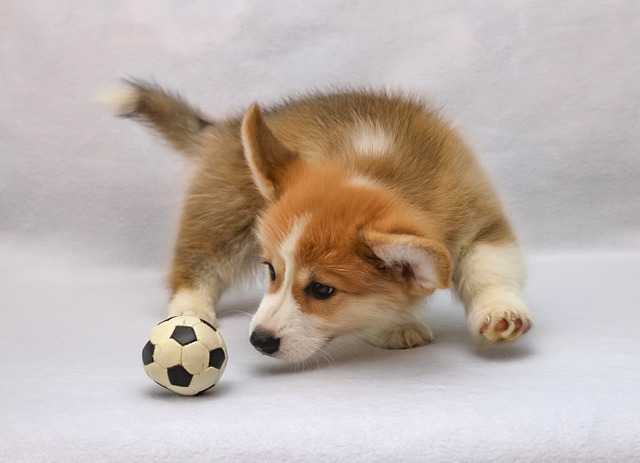
How can I tell if my dog's heatstroke is serious
Let’s be real: It’s a sticky August morning in Los Angeles, and you took your 2-year-old Golden Retriever, Max, for a walk a little later than usual
Trimming your dog’s nails is a routine part of care, but it’s natural to wonder: does it hurt them? The answer depends on how you do it—and whether you respect their unique anatomy and comfort. Let’s explore the truth about nail care, so you can keep their paws happy without stress.
Dogs have a sensitive structure in their nails called the "quick"—a bundle of blood vessels and nerves that runs through the light-colored part of the nail (more hidden in dark nails). Cutting into the quick causes sharp pain, bleeding, and fear, which is why precision matters. When done correctly, staying well above the quick, nail trimming shouldn’t hurt at all—your dog may feel pressure, but not pain.
The key is understanding their nail type. Dogs with clear or light nails have visible pink quills, making it easier to see where to stop. Dark nails are trickier; here, trim a little at a time, using a flashlight to backlight the nail and spot the quick’s edge. Err on the side of caution—shaving a millimeter too much once is better than cutting the quick and creating trauma.
How you approach trimming matters as much as the tool. Many dogs fear nail clippers due to past mishaps or harsh handling. Start by desensitizing them early: touch their paws gently during play, reward calm behavior, and gradually introduce the clippers as a neutral object. Use pet-specific clippers or a nail grinder, which some dogs find less intimidating due to the slower, smoother grind.
 Positive reinforcement is your secret weapon. Before trimming, give your dog a high-value treat, and keep offering tiny pieces during the process. Praise softly, keep sessions short (5-10 minutes), and stop if they tense up. Over time, they’ll associate nail care with rewards, not fear. For rescue dogs or those with trauma, go even slower—trust takes time, but patience rebuilds their confidence.
Positive reinforcement is your secret weapon. Before trimming, give your dog a high-value treat, and keep offering tiny pieces during the process. Praise softly, keep sessions short (5-10 minutes), and stop if they tense up. Over time, they’ll associate nail care with rewards, not fear. For rescue dogs or those with trauma, go even slower—trust takes time, but patience rebuilds their confidence.
What if they resist? For dogs who shake their paws, growl, or panic, never force the issue. This can create a cycle of fear and pain. Instead, consult a vet or professional groomer who uses gentle restraint and knows how to handle tricky paws. In some ,certified pet groomers are trained in stress-free techniques, aligning with animal welfare standards that prioritize the dog’s emotional state.
Regular maintenance reduces the risk of pain. Long nails don’t just look messy—they curve into the paw pad, causing chronic discomfort and even deformity. A monthly trim (or more frequent for fast-growing nails) keeps their stride natural, preventing the kind of pain that comes from neglect. If you see your dog limping, scratching at their nails, or refusing to walk on hard floors, it’s likely a sign their nails are too long or injured.
Healthy nails start with early training. Puppies can learn paw handling as part of socialization, making adult care easier. For senior dogs with arthritis, trimming becomes extra important—long nails worsen joint strain. Use a grinder for older dogs with thick nails, as it’s gentler on stiff paws and allows for precise, gradual shaping.
Legally and ethically, responsible nail care is part of being a mindful pet owner. In regions where animal cruelty laws are strict, neglecting nail health (leading to pain or injury) can have consequences. But beyond rules, it’s about kindness: your dog relies on you to keep their paws in good shape, so they can run, play, and climb without discomfort.
The bottom line: dogs don’t have to feel pain when you trim their nails—when you’re informed, patient, and gentle. Take the time to learn their quick’s limits, use the right tools, and turn trimming into a positive bonding experience. Your dog’s paws are their connection to the world; caring for them with care and respect ensures every step they take is a happy one.
So go slowly, celebrate small victories, and remember: a calm, confident approach tells your dog they’re safe. With practice, nail trimming becomes just another way to show them love—one paw at a time.

Let’s be real: It’s a sticky August morning in Los Angeles, and you took your 2-year-old Golden Retriever, Max, for a walk a little later than usual

You're enjoying a summer afternoon at the park when you notice your dog has stopped panting and appears disoriented - their gums are bright red

Let’s paint the picture: You’re in your Denver apartment, watching your 4-year-old Boston Terrier, Ruby, plop down mid-play session with her favorite toy

Many dog owners notice their pets nails seem shorter after regular walks,but how much does this daily activity actually help?The answer depends on where you walk—concrete sidewalks or asphalt streets gently file nails as a dog's paws hit the ground

Most dog owners notice their pup scooting across the carpet at some point, but few connect it to impacted anal glands. These small sacs near a dog’s rectum secrete a scent for marking territory

Most vets agree that regular dog teeth cleaning is key to avoiding painful dental issues later. For healthy adult dogs, a professional cleaning at the vet’s office every 12 to 18 months usually works well.